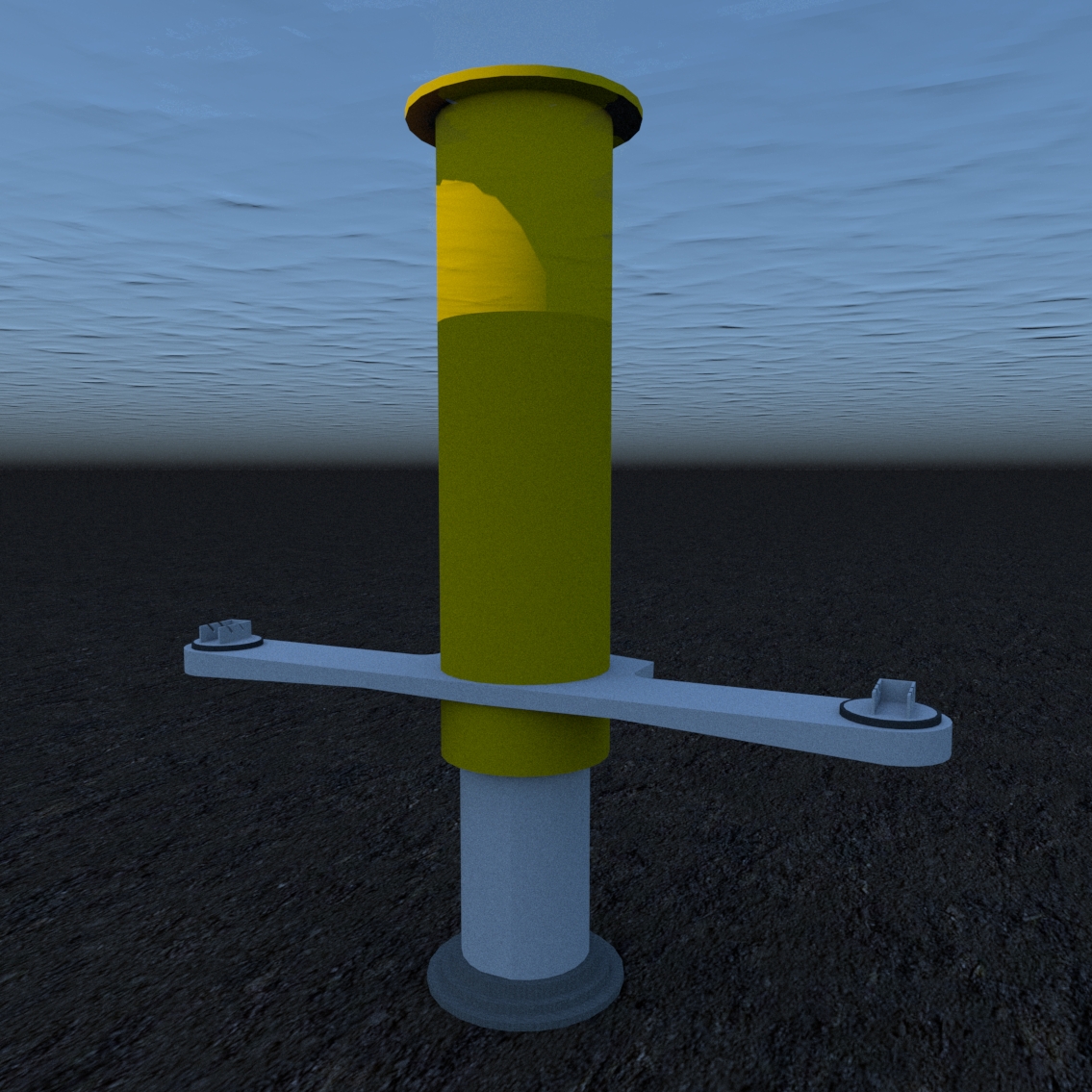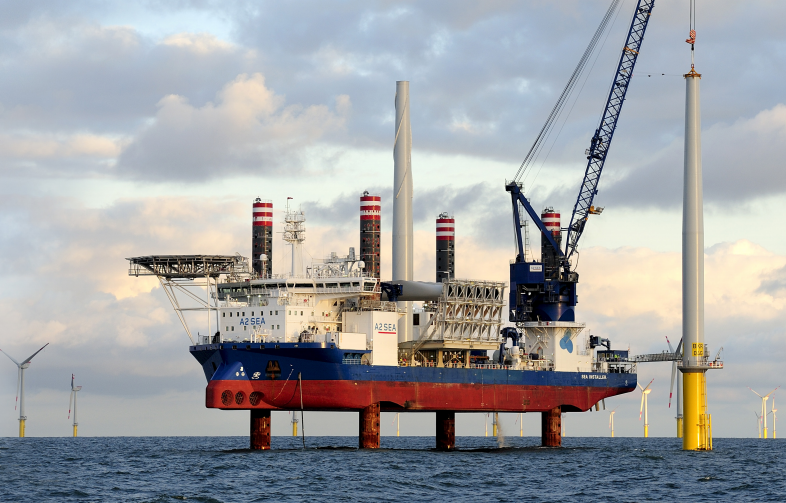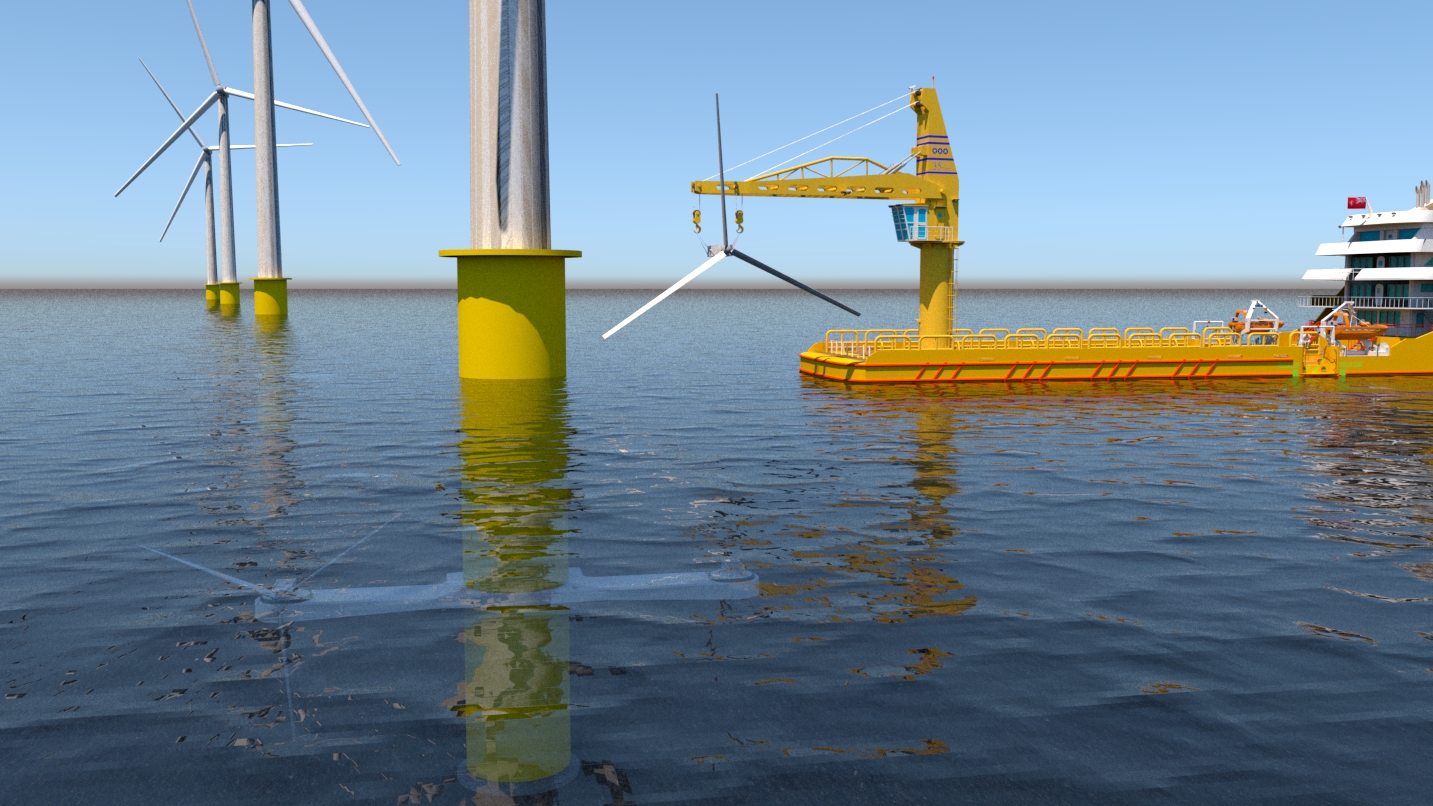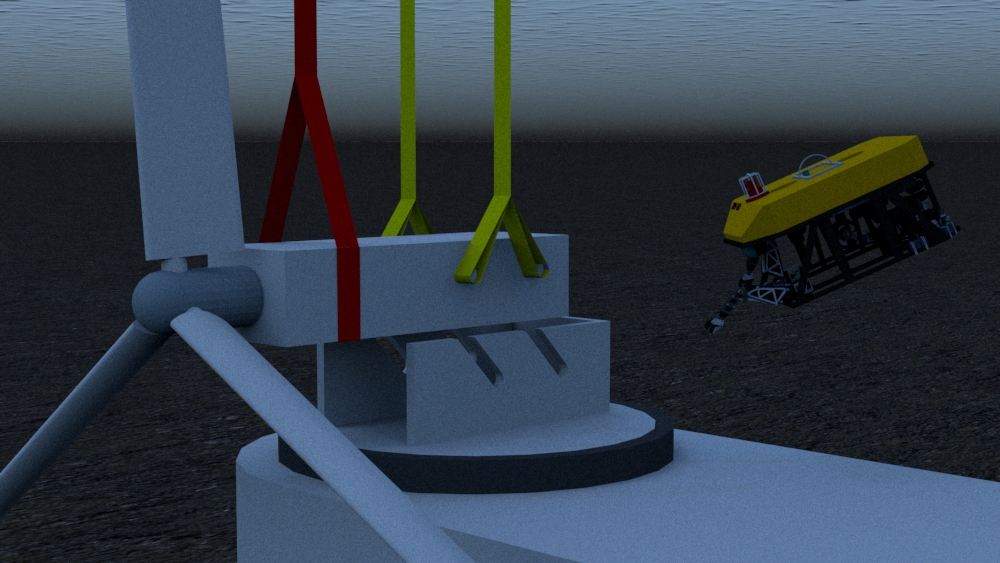Operation, Installation and Maintenance
Currently in the UK there are a number of offshore renewable energy projects being proposed for the next decade. There is a huge focus on the offshore wind sector and although well researched sector there is still is still room for improvement and challenges as the wind farms are moving further away from the shore. In order to generate more energy from renewables the industry cannot be just dependent on wind which is such an intermittent source but need to investigate and commercialise other devices such as wave and tidal energy convertors. .
The offshore renewable energy sector is relatively new and requires a wide variety of specialised vessels to carry out different tasks for installation and O&M operation. In the past, the offshore RE industry borrowed these vessels from the offshore oil and gas industry or inshore civil construction industry ideally suited for shallow waters. With the offshore renewable farms moving further away from the shore and the shortage of suitable vessels there is a rapid growth of new vessels specifically designed for the RE industry entering the market [1].
Types of Vessels
There are several types of vessels available in the market used in the offshore installation procedures. The table below shows some of the vessel types, their abilities and limitations.
| Vessel Types | Abilities | Limitations |
| Multicat | Typically has a larger carrying capacity than a workboat. Often has a small crane and/or winches board | Seakeeping ability in adverse conditions,green water |
| Workboad | Highly maneuverable usually able to navigate much shallower water depths than larger vessels | Seakeeping ability in adverse conditions |
| Offshore Construction Vesssel (OCV) | Can be heave compensated | Risk of loss of heave compensation during lifting operation |
| Jack-up barge | Stable platform for a variety of installation tasks (e.g. pilling). Vessel can remain on station for long periods of time | Risk of vessel lift due to loss of sir gaps |
| Anchor Handling Tug (AHT) | Specially designed for the installation and recovery of anchor | Safety of crew from green water on deck |
| High Lift Vessel (HLV) | Utilised extensively for offshore wind turbine installation | Safety risk due to motion of crane jib |
A lot of new vessels have dynamic positioning (DP) system incorporated. DP is a computer-controlled system that uses GPS navigation to keep the vessel in position during installation using thrusters and propellers [3]. There are three major types of DP systems: DP class 1, DP class 2 and DP class 3. The most common one used in the offshore industry is DP class 2. This is because of its ability to keep in position in rough sea conditions. Furthermore, Loss of position does not occur due to a single fault making them more reliable [1].
Selection of Vessels
The selection of suitable vessel depends on several factors: [2]
- Maneuverability
- Provision of thrusters
- Personnel carrying capacity
- Equipment payload
- Safety and regulatory factors
- Weather and sea-state dependency
- Direct cost (of retaining and using a service)
- Deck spacing
- Lifting capabilities
- Deployment location characteristics (offshore, nearshore, shoreline)
- Seabed conditions
Considerations
Deployment operation, even though a simple task in the installation procedure, involves the greatest risk since it requires handling of marine energy devices that are the biggest asset of the production plant project. It is therefore important to properly plan and design these deployments. This operation is weather restricted and therefore time constrained so it is important to properly prepare and plan these activities. A formalised weather forecast assessment should be carried out that includes information about: [2]
- Wind(speed and direction)
- Waves (significant wave height, period, direction)
- Current (speed and direction)
- Sea level and tide variation
- Visibility (fog, rain)
- Temperature, barometric pressure
HOWaT
In our hybrid system, a tidal turbine and wind turbine is mounted on the same foundation. This section focusses on installation, maintenance and operation of our system. A pre-installation survey should also be conducted to identify the possible constraints, selection of vessel types and other equipment’s needed during installation.
Our system consists of monopile, transition piece, tower, tidal turbine support structure, wind and tidal turbines. The tidal turbine support structure is welded on to the transition piece as seen in Figure 1. It is welded on shore and that then transported offshore which allows for the ease of installation.

Installation and Maintenance of Wind Turbine and Structure
Monopile, transition piece, tower and wind turbine are installed separately and in a sequence [1] using a jack-up vessel. A jack up vessel has 4 legs that extend to the seabed and lifts the vessel up completely out of water that allows for safer and effective installation.
Currently the O&M of offshore wind turbine generator or met mast is carried out using small fast craft to ferry technicians from onshore base and then back on a daily basis. There are seasonal planned maintenance scheduled that require small jack up vessels that has a crane onboard which lifts to and from nacelle [1].

Installation and Maintenance of Tidal Turbine
For the installation of tidal turbine, a dynamic positioning (DP) vessel is used (Figure 3). Weather and sea conditions such as strong periodic tidal currents need to be taken into account for the deployment of tidal turbine. The tidal turbine has two handles on each side, cables are attached to them and the turbine is lowered. The turbine and support structure are designed such that the turbine progressively aligns itself with the support structure. Once coupled the turbine is held in place due to gravity not requiring any locking mechanism. The cables can be unhooked using remotely operated vehicle (ROV) as represented in Figure 4.
The maintenance of tidal turbine due to extreme environmental conditions is not conducted on site, it is removed and transported to an onshore base for either planned or emergency maintenance [1].


The tidal turbine is capable of rotating 180 degree and depending on the tidal current direction the rotor can be adjusted to get the maximum power output.
Conclusions
The maintenance of our hybrid system will be carried out during calm weather and stable sea conditions. Due to 27m clearance from the tip of the wind turbine blade to sea surface and 4 m clearance area from the tip of tidal turbine blade to sea surface we would be able to carry out the maintenance without shutting down the generation.
It is very important that pre-installation survey is conducted, this helps in optimising the installation procedure. Weather conditions should be taken into account during the installation and maintenance procedure. “Access time” and “waiting time” should also be considered. Most importantly suitable vessel should be chosen and attention is given to health and safety procedures [2].
- Submarine Cables and Offshore Renewable Energy Installations. [online] Available at: https://www.thecrownestate.co.uk/media/5708/submarine-cables-and-offshore-renewable-energy-installations-proximity-study.pdf [Accessed 6 May 2017].
- MERiFIC. (2017). Best practice report - Installation Procedures. [online] Available at: http://www.merific.eu/files/2012/06/D3-6-2-FINAL-Best-Practice-Report_Installation_Procedures.pdf [Accessed 6 May 2017].
- A2SEA. (2017). SEA INSTALLER - Offshore wind turbine installation vessel. [online] Available at: http://www.a2sea.com/fleet/sea-installer/ [Accessed 6 May 2017].
- Yellow & Finch Publishers. (2017). Dong Energy | Yellow & Finch Publishers. [online] Available at: http://www.ynfpublishers.com/tag/dong-energy [Accessed 6 May 2017].